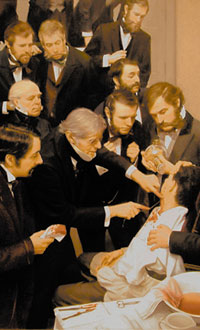Hebrew UniversityA new understanding of how anesthesia and anesthesia-like states are controlled in the brain opens the door to possible new future treatments of various states of loss of consciousness, such as reversible coma, according to Hebrew University of Jerusalem scientists. In an article published in the Journal of Neuroscience, the scientists, Marshall Devor, the Cecile and Seymour Alpert Professor of Pain Research, graduate student Ruth Abulafia and research associate Dr. Vladimir Zalkind describe their discovery of an area of the brain that participates in the control of "alert status." Alert status' area in brain discoved by Hebrew University scientists
Loss of response to painful stimuli and loss of consciousness are the most striking characteristics of surgical anesthesia and anesthesia-like states, such as concussion, reversible coma, and syncope (fainting). These states also exhibit behavioral suppression, loss of muscle tone, a shift to the sleep-like "delta-wave" EEG pattern, and depressed brain metabolism.
It has been widely presumed that this constellation of dramatic functional changes reflects widely distributed suppression of neuronal activity in the brain due to dispersed drug action, or to global oxygen or nutrient starvation.
However, new results revealed by the Hebrew University scientists suggest a radically different architecture -- that a small group of neurons near the base of the brain, in the mesopontine tegmentum, has executive control over the alert status of the entire cerebrum and spinal cord, and can generate loss of pain sensation, postural collapse and loss of consciousness through specific neural circuitry.
This conclusion derives from the observation that microinjection of tiny quantities of certain anesthetic drugs into this newly discovered "center of consciousness" in laboratory rats induced a profound suppressive effect on the activity of the cerebral cortex.
It is not certain that these results will translate reliably from rats to man. But if they do, there are at least two implications of considerable interest. First, this knowledge could contribute to the ability of medical science to treat disorders of consciousness and its loss, such as insomnia, excessive sleepiness and even coma. Perhaps by direct electrical stimulation of the cells in question, it might prove possible to arouse a patient from coma.
Second, the discovery of a specific cluster of neurons that control the brain's state of consciousness can be expected to lead to the beginnings of an understanding of the actual wiring diagram that permits a biological machine, the brain, to be conscious.
Refs
HOME
Propofol
Resources
Snapshots
Anaesthesia
Ketamine.com
